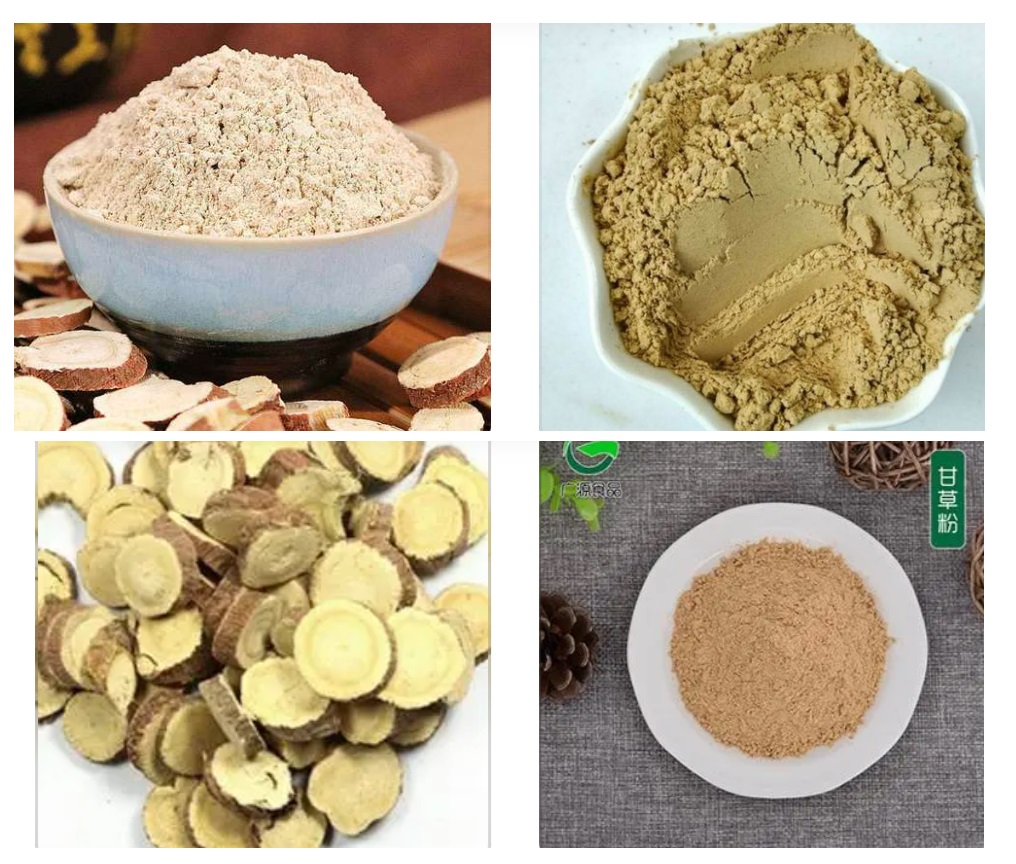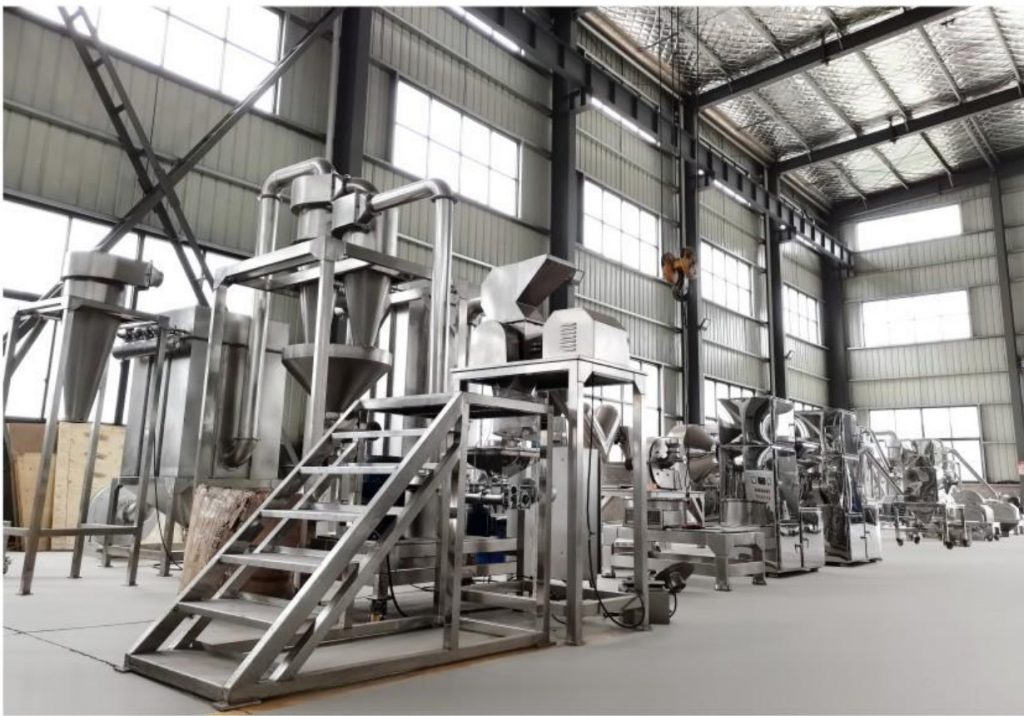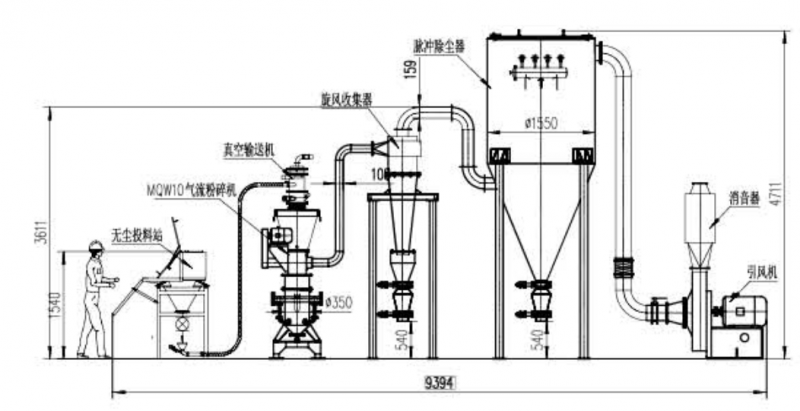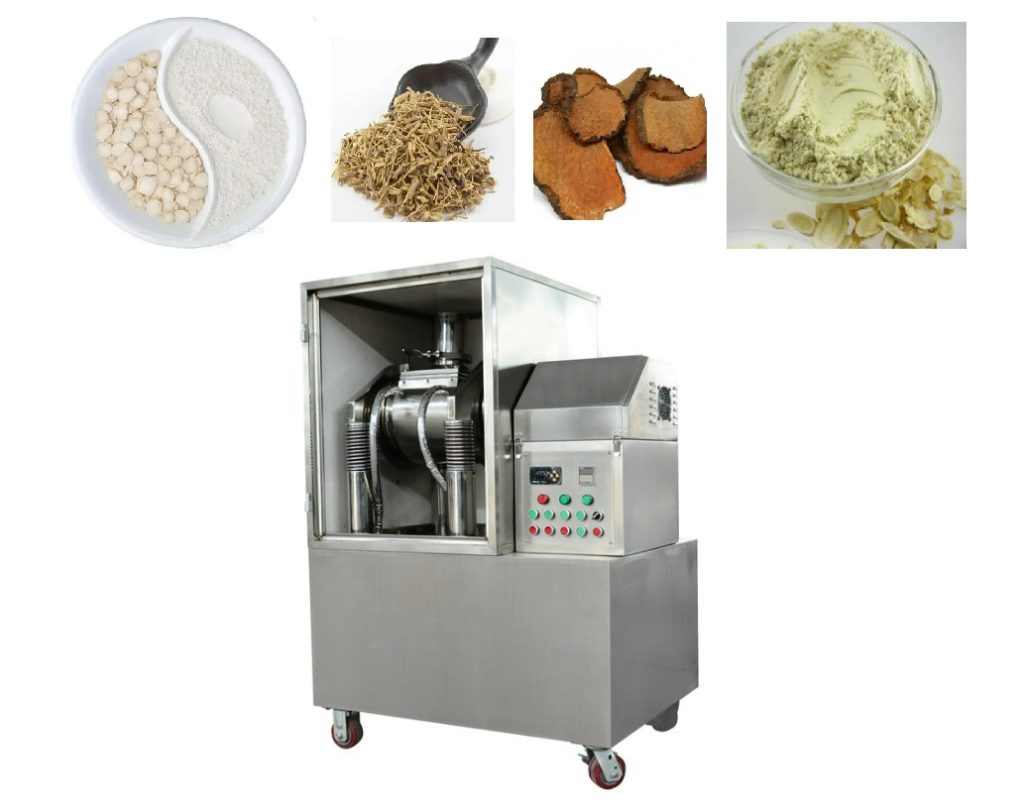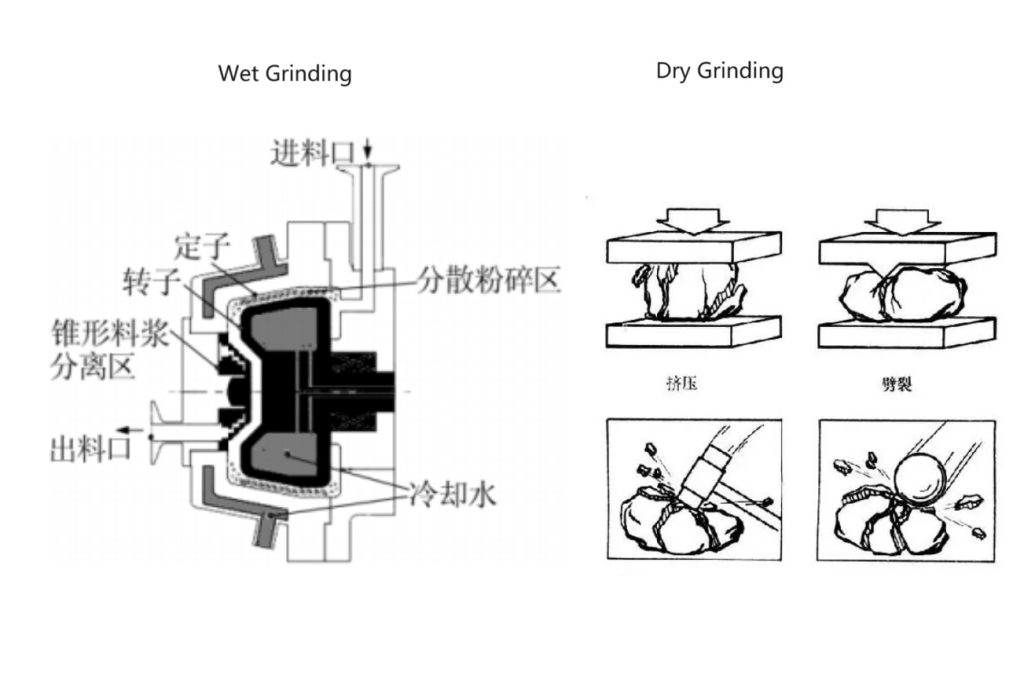What is a Granulator
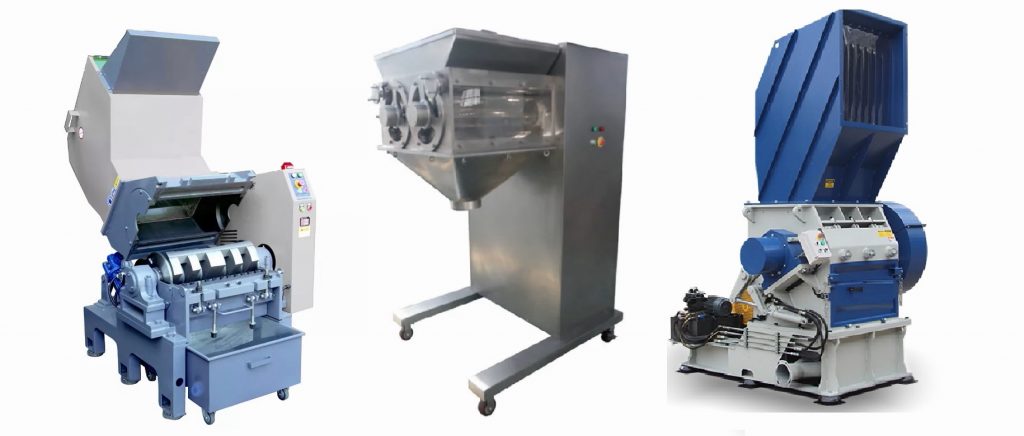
I. Introduction
Definition of a granulator
What is a granulator? A granulator is a machine or device that is used to transform a variety of materials into granules or particles of a consistent size and shape. Granulation is a process of size reduction in which larger particles or materials are broken down into smaller particles or granules, often for the purpose of easier handling, processing, or transportation.
Granulators can be used in various industries, such as pharmaceuticals, food processing, plastics, and chemicals, and they can be designed to handle a wide range of materials, including powders, pellets, crystals, and even liquids. The granulation process typically involves feeding the material into a rotating drum or other chamber where it is subjected to various forces, such as cutting, shearing, and compression, to break it down into smaller particles. The resulting granules can then be collected, stored, or further processed as needed.
Purpose of a granulator
The purpose of a granulator is to transform materials into granules or particles of a consistent size and shape. Granulation is a process of size reduction in which larger particles or materials are broken down into smaller particles or granules, often for the purpose of easier handling, processing, or transportation. Granulators are used in various industries, such as pharmaceuticals, food processing, plastics, and chemicals, and they can be designed to handle a wide range of materials, including powders, pellets, crystals, and even liquids.
The primary purpose of a granulator is to reduce the size of materials to a form that is easier to handle or process. Large particles or materials may be difficult to transport or store, and may require additional processing steps to break them down into smaller sizes. By using a granulator, the process of reducing the particle size can be done more efficiently and cost-effectively, resulting in a product that is easier to handle, transport, and process.
In the pharmaceutical industry, for example, granulation is an important step in the production of tablets and capsules. The active ingredient and other excipients are often mixed with a binding agent to form a wet mass, which is then passed through a granulator to produce granules of a consistent size. The granules are then dried and further processed to produce tablets or capsules of the desired dosage and formulation.
In the food industry, granulation is used for a variety of purposes, such as to improve the flow properties of powders or to produce granules of specific shapes and sizes. For example, sugar granules may be produced by passing a syrup through a granulator, resulting in granules of a consistent size and shape that can be used in various food products.
In the plastics industry, granulation is used to process waste plastic materials into granules that can be reused in the production of new products. The waste plastic is shredded and then passed through a granulator, resulting in granules of a consistent size that can be used as raw material for new products.
The chemical industry also uses granulators to produce a variety of products, such as fertilizers, pesticides, and detergents. By using a granulator, the chemical materials can be processed into granules that are easier to handle, store, and transport.
The design and functionality of a granulator depend on the specific application and material being processed. Granulators can be designed to handle materials with different properties, such as powders, pellets, crystals, and liquids. They can also be designed to produce granules of different shapes and sizes, depending on the application.
Granulators typically consist of a rotating drum or chamber that is used to break down the material into smaller particles. The material is fed into the drum or chamber, where it is subjected to various forces, such as cutting, shearing, and compression. The resulting granules are then collected and further processed as needed.
To ensure efficient and effective granulation, the design and operation of the granulator must be carefully considered. Factors such as the material properties, process conditions, and design of the granulator can affect the quality of the granules produced. Maintenance and troubleshooting of granulators are also important to ensure optimal performance and longevity of the equipment.
In conclusion, the purpose of a granulator is to transform materials into granules or particles of a consistent size and shape. Granulation is a process of size reduction that is used in various industries, such as pharmaceuticals, food processing, plastics, and chemicals. Granulators can be designed to handle a wide range of materials and can produce granules of different shapes and sizes. The design and operation of the granulator must be carefully considered to ensure efficient and effective granulation.
Importance of understanding granulation technology
Understanding granulation technology is important for a variety of reasons, as it plays a critical role in many industries, such as pharmaceuticals, food processing, plastics, and chemicals. Granulation technology involves the process of breaking down materials into granules or particles of a consistent size and shape, and it is used for a wide range of applications, including size reduction, particle formation, and material handling. By understanding granulation technology, we can optimize the performance of granulators, improve the quality of granules produced, and reduce the costs associated with granulation.
In the pharmaceutical industry, for example, granulation technology is essential for the production of tablets and capsules. Granulation is used to create granules of a consistent size and shape, which can then be compressed into tablets or filled into capsules. By understanding the granulation process and the properties of the materials being processed, manufacturers can produce high-quality tablets and capsules that meet the required specifications for dosage and dissolution.
Granulation technology is also important in the food industry, where it is used for a variety of purposes, such as to produce granules of specific shapes and sizes, to improve the flow properties of powders, and to produce food products with desirable textures. By understanding the granulation process, food manufacturers can produce products that meet consumer preferences and regulatory requirements, while also improving the efficiency of their production processes.
In the plastics industry, granulation technology is used to process waste plastic materials into granules that can be reused in the production of new products. By understanding the properties of the materials being processed, as well as the design and operation of the granulator, manufacturers can produce high-quality recycled plastic granules that meet the required specifications for use in new products.
In addition to its applications in various industries, understanding granulation technology is also important for researchers and scientists who are developing new materials and products. By understanding the granulation process and the properties of materials, researchers can design new materials and products that meet specific requirements, such as improved flow properties, increased solubility, and controlled release.
Furthermore, understanding granulation technology can help to reduce costs associated with granulation by optimizing the design and operation of granulators. By improving the efficiency of the granulation process, manufacturers can reduce energy consumption, minimize waste, and improve the yield of granules produced.
Overall, understanding granulation technology is important for a wide range of applications in various industries, as well as for researchers and scientists developing new materials and products. By understanding the granulation process and the properties of materials, manufacturers can produce high-quality granules that meet required specifications, while also improving the efficiency of their production processes and reducing costs associated with granulation.
II. Granulation Process
Overview of the granulation process
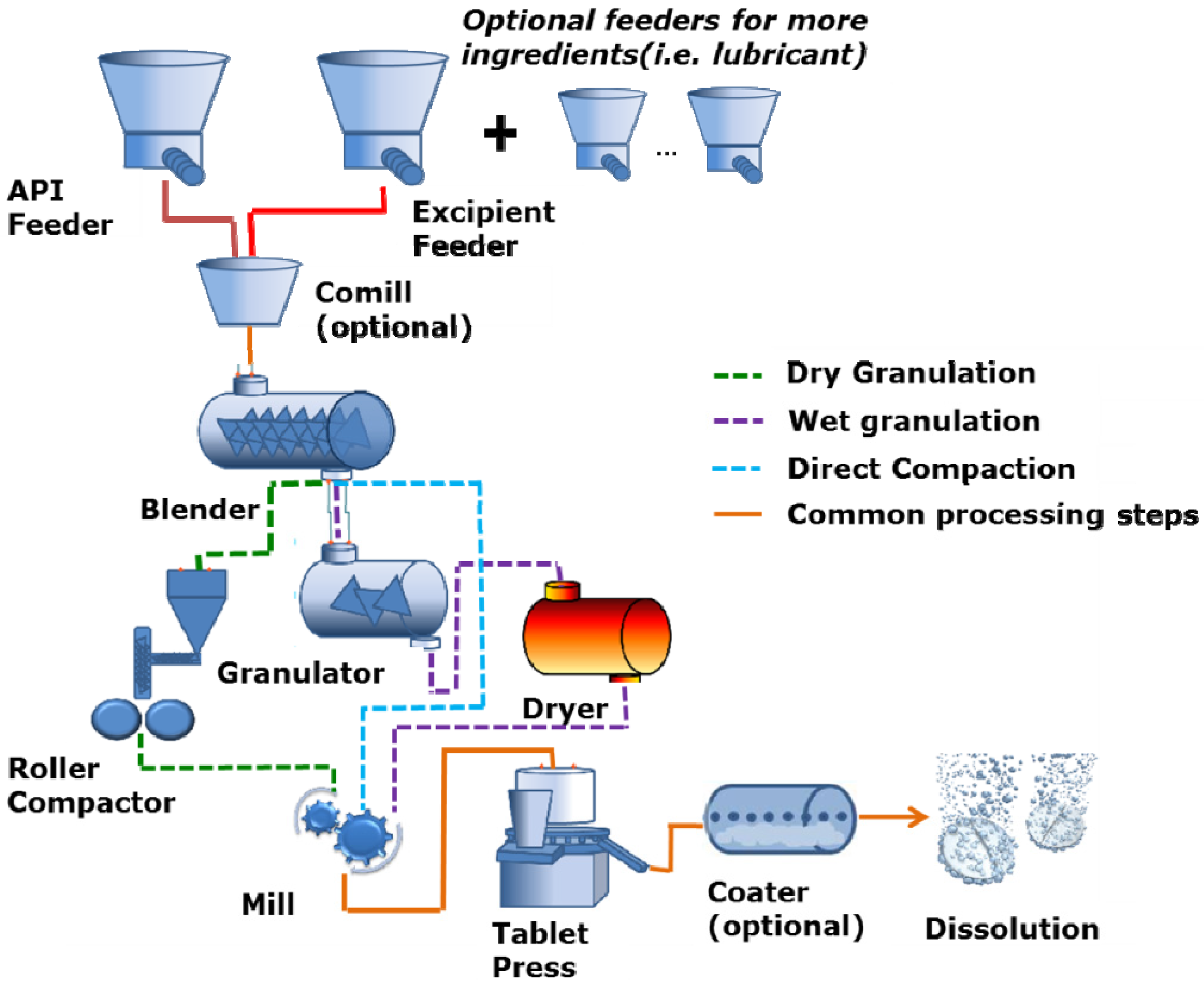
Granulation is the process of forming granules or particles from powders or other materials. It is widely used in a variety of industries, such as pharmaceuticals, food processing, chemicals, and plastics, to produce materials with desired properties such as size, shape, density, and flowability. The granulation process typically involves three main steps: wetting, nucleation, and growth.
Wetting is the first step in the granulation process, which involves adding a liquid binder to the powder material. The binder is typically a solution or suspension of a polymer, sugar, or other substance that can form a cohesive bond between the particles. The wetting process can be carried out using various methods such as spraying, mixing, or fluidized bed granulation. The aim of wetting is to form a uniform distribution of the binder in the powder material.
The next step in the granulation process is nucleation, which involves the formation of small agglomerates or nuclei from the wetted powder. The nuclei are typically formed through the action of shear forces, either mechanically or through the use of air or other gas streams. The nucleation step is critical, as it determines the size and distribution of the final granules. The aim of nucleation is to produce small, uniform nuclei that can then be further grown into larger granules.
After nucleation, the granules are grown through the process of growth. This step involves the addition of more binder solution to the nuclei to form larger granules. The binder solution is typically added in a controlled manner, either through spraying or mixing, to ensure the growth of uniform granules. The size and shape of the final granules are determined by the rate of binder addition, the properties of the binder, and the conditions of the granulation process.
In addition to the three main steps, there are other factors that can affect the granulation process, such as the properties of the powder material, the type of binder used, the mixing and granulation conditions, and the equipment used. For example, the properties of the powder material, such as particle size, shape, and density, can affect the uniformity and flowability of the final granules. The type of binder used can affect the strength and stability of the granules, as well as their solubility and dissolution properties. The mixing and granulation conditions, such as the speed and duration of mixing, the temperature and humidity of the granulation environment, and the flow rate of the binder solution, can also affect the properties of the final granules.
There are several types of granulators used in the granulation process, including fluidized bed granulators, high-shear granulators, and extrusion-spheronization granulators. Each type of granulator has its advantages and disadvantages, depending on the specific application and requirements. Fluidized bed granulators are commonly used in the pharmaceutical industry, as they offer high efficiency and uniformity of granules. High-shear granulators are used in the food and chemical industries, as they can produce granules of different shapes and sizes. Extrusion-spheronization granulators are used in the production of pellets and other spherical granules.
In conclusion, the granulation process is an important step in the production of granules or particles from powders or other materials. It involves the wetting of the powder material, nucleation of small agglomerates or nuclei, and growth of the nuclei into larger granules. The process is affected by various factors, such as the properties of the powder material, the type of binder used, and the mixing and granulation conditions. The choice of granulator depends on the specific application and requirements of the final granules.
Different types of granulators and their operation
There are several types of granulators used in the granulation process, each with its own advantages and disadvantages. These include fluidized bed granulators, high-shear granulators, and extrusion-spheronization granulators.
Fluidized bed granulators are widely used in the pharmaceutical industry, as they offer high efficiency and uniformity of granules. The principle behind fluidized bed granulation is the suspension of powder particles in a fluidized bed of air or other gas, which allows for rapid and uniform drying of the granules. The process involves four main stages: spraying, drying, fluidization, and cooling.
During the spraying stage, a liquid binder solution is sprayed onto the powder material, which is then dried in the drying stage. The dried particles are then fluidized in the fluidization stage, where the bed of particles is maintained in a state of constant motion by the upward flow of air or gas. The final stage involves cooling the granules to room temperature, after which they can be further processed or packaged.
High-shear granulators are commonly used in the food and chemical industries, as they can produce granules of different shapes and sizes. The principle behind high-shear granulation is the application of mechanical force to the powder material, which results in the formation of agglomerates or nuclei. The process involves three main stages: dry mixing, wet granulation, and drying.
During the dry mixing stage, the powder material is mixed with the binder solution to form a homogeneous mixture. The mixture is then wet granulated by the application of mechanical force, such as through the use of a high-speed mixer or a fluidized bed granulator. The final stage involves drying the granules to remove the excess moisture, after which they can be further processed or packaged.
Extrusion-spheronization granulators are commonly used in the production of pellets and other spherical granules. The principle behind extrusion-spheronization is the conversion of a powder mixture into a dense, homogeneous mass that can be extruded through a die to form cylindrical extrudates. The extrudates are then spheronized by the application of mechanical force, such as through the use of a spheronizer or a fluidized bed granulator. The process involves four main stages: wet massing, extrusion, spheronization, and drying.
During the wet massing stage, the powder material is mixed with the binder solution to form a homogeneous mass. The mass is then extruded through a die to form cylindrical extrudates. The extrudates are then spheronized by the application of mechanical force, which results in the formation of spherical granules. The final stage involves drying the granules to remove the excess moisture, after which they can be further processed or packaged.
Each type of granulator has its advantages and disadvantages, depending on the specific application and requirements. Fluidized bed granulators offer high efficiency and uniformity of granules, but can be expensive to operate and maintain. High-shear granulators can produce granules of different shapes and sizes, but can be less efficient than fluidized bed granulators. Extrusion-spheronization granulators are commonly used in the production of pellets and other spherical granules, but can be time-consuming and require specialized equipment.
In conclusion, the choice of granulator depends on the specific application and requirements of the final granules. Each type of granulator has its advantages and disadvantages, and the selection should be based on factors such as the properties of the powder material, the type of binder used, and the desired size, shape, and density of the final granules.
Factors affecting granulation, such as material properties and process conditions
The granulation process is influenced by a range of factors that can affect the quality and characteristics of the final granules. Some of the most important factors that affect granulation include material properties and process conditions.
Material Properties:
- Particle size and distribution: Particle size and distribution are critical factors that can affect the formation of granules. Fine particles tend to form weaker and smaller granules, while larger particles tend to form larger and more robust granules.
- Powder density: Powder density can affect the packing of particles, which can affect the flow and distribution of the binder during granulation. Higher powder densities can lead to more uniform granules with better mechanical strength.
- Powder morphology: The shape of the powder particles can also influence granule formation. Materials with irregular particle shapes may require more binder or higher shear forces to form granules.
- Moisture content: The moisture content of the powder material can have a significant impact on granule formation. A high moisture content can lead to the formation of soft and sticky granules, while a low moisture content can lead to the formation of dry and brittle granules.
Process Conditions:
- Binder type and concentration: The choice of binder and its concentration can significantly affect the granule formation process. Binders act as a bridge between particles, providing cohesion and adhesion between them. The concentration of the binder should be optimized to achieve the desired granule characteristics.
- Mixing time and intensity: Mixing time and intensity can affect the degree of powder-binder interaction and the size and uniformity of the granules. Longer mixing times and higher mixing intensities can lead to more homogeneous granules.
- Granulation temperature: Granulation temperature can affect the flow and viscosity of the binder, as well as the moisture content of the granules. Higher temperatures can lead to faster drying times, but can also increase the risk of thermal degradation of the powder material.
- Shear force: Shear force is an essential factor that affects granule formation, and different types of granulators apply different levels of shear force. Higher shear forces can lead to the formation of smaller and more uniform granules, but can also result in over-wetting or under-wetting of the powder material.
- Drying time and conditions: Drying time and conditions can affect the moisture content and final properties of the granules. Longer drying times can lead to more uniform and stable granules, but can also increase the risk of over-drying and shrinkage.
In conclusion, understanding the factors that affect granulation is essential for optimizing the granulation process and achieving the desired properties of the final granules. Material properties and process conditions must be carefully considered and optimized to achieve the desired size, shape, and mechanical properties of the granules. By selecting the appropriate granulation parameters, manufacturers can ensure the production of high-quality granules for a range of applications.
III. Applications of Granulators
Various industries that use granulators
Granulators are widely used in many different industries to produce granules of various materials. Some of the key industries that use granulators include:
- Pharmaceutical Industry: Granulators are commonly used in the pharmaceutical industry to produce granules from powders for use in tablets and capsules. These granules can improve the flow and compressibility of the powder, as well as enhance the dissolution rate and bioavailability of the active ingredient.
- Chemical Industry: Granulators are used in the chemical industry to produce granules from a range of materials, including fertilizers, detergents, and pigments. These granules can improve the handling, storage, and transportation of these materials, as well as improve their performance in various applications.
- Food Industry: Granulators are used in the food industry to produce granules from a range of ingredients, including sugars, starches, and flavorings. These granules can improve the texture, appearance, and flavor of the final product, as well as improve its processing and handling characteristics.
- Recycling Industry: Granulators are used in the recycling industry to reduce the size of waste materials, including plastics, rubber, and metals. The granulated materials can then be further processed into new products or used as raw materials in other manufacturing processes.
- Mining Industry: Granulators are used in the mining industry to produce granules from minerals, including ores, coal, and rocks. These granules can improve the handling and transportation of these materials, as well as improve the efficiency of downstream processes, such as smelting and refining.
- Plastics Industry: Granulators are widely used in the plastics industry to reduce the size of plastic waste and to produce granules from virgin plastic materials. These granules can then be used to produce a range of plastic products, including bags, packaging, and containers.
- Construction Industry: Granulators are used in the construction industry to produce granules from various materials, including cement, sand, and gravel. These granules can improve the handling and transportation of these materials, as well as improve the performance of concrete and other construction materials.
In summary, granulators are used in a wide range of industries to produce granules from various materials. These granules can improve the handling, storage, and performance of the materials, as well as enable the production of new products and the recycling of waste materials.
Specific applications of granulators in each industry
Here are some specific applications of granulators in each industry:
Pharmaceutical Industry:
- Production of granules for tablet and capsule formulations
- Production of granules for controlled drug delivery systems
- Production of granules for effervescent and chewable tablets
- Production of granules for dry powder inhalers
Chemical Industry:
- Production of granules for fertilizers and agrochemicals
- Production of granules for detergents and cleaning products
- Production of granules for pigments and dyes
- Production of granules for catalysts and adsorbents
Food Industry:
- Production of granules for instant coffee and instant tea
- Production of granules for sugar substitutes and sweeteners
- Production of granules for flavorings and seasonings
- Production of granules for nutritional supplements
Recycling Industry:
- Reduction of plastic waste into small granules for further processing
- Reduction of rubber waste into small granules for use in new products
- Reduction of metal waste into small granules for use in metal processing
Mining Industry:
- Production of granules from mineral ores for easier handling and transportation
- Production of granules from coal for more efficient combustion
- Production of granules from rocks for use in road construction and other applications
Plastics Industry:
- Reduction of plastic waste into small granules for recycling into new products
- Production of granules from virgin plastic materials for use in injection molding and other processes
Construction Industry:
- Production of granules from cement for use in concrete and other construction materials
- Production of granules from sand and gravel for use in asphalt and other road materials
In each industry, granulators are used to create granules that can improve the handling, storage, and performance of materials, or enable the production of new products.
Advantages of using granulators for size reduction and particle formation
Using granulators for size reduction and particle formation offers several advantages, including:
- Uniformity: Granulators produce particles that are uniformly sized and shaped, resulting in consistent product quality and performance. This is especially important in industries such as pharmaceuticals, where the size and shape of particles can affect drug release rates and bioavailability.
- Controllable particle size: Granulators allow for precise control over the size of particles produced, enabling the production of granules with specific particle size distributions. This is important in industries such as food, where particle size can affect the texture and mouthfeel of the final product.
- Increased surface area: By reducing the size of particles, granulators increase the surface area of the material, which can improve dissolution rates, reactivity, and bioavailability. This is particularly important in industries such as pharmaceuticals and chemical processing.
- Improved flow properties: Granulators can produce particles with improved flow properties, reducing the likelihood of clogging or bridging during processing and improving the efficiency of downstream processes.
- Enhanced mixing properties: Granulated materials are often easier to mix than powders, allowing for more uniform distribution of additives and improved product homogeneity.
- Increased bulk density: Granulation can increase the bulk density of powders, resulting in lower transportation and storage costs.
- Recycling: Granulators can also be used to reduce the size of waste materials, such as plastic or rubber, which can then be recycled or repurposed.
In summary, using granulators for size reduction and particle formation offers many advantages, including improved product uniformity, controllable particle size, increased surface area, improved flow and mixing properties, increased bulk density, and the ability to recycle waste materials.
IV. Design and Functionality
Components of a typical granulator
A typical granulator consists of several components, including:
- Hopper: This is the container that holds the material to be granulated. The hopper can be equipped with a stirrer to prevent bridging and ensure a consistent feed of material to the granulator.
- Impeller: The impeller is the rotating component of the granulator that breaks up the material and forms it into granules. The impeller can have various configurations, including paddle, screw, or blade designs, depending on the desired granule properties.
- Chopper: The chopper is a secondary cutting mechanism that can be used to break up oversized granules or control the final particle size distribution. The chopper can be configured with various blade designs, such as straight, angled, or serrated blades.
- Screen: The screen is a perforated plate that separates the granules from the fines and ensures a uniform particle size distribution. The screen size can be adjusted to control the final particle size distribution.
- Discharge chute: The discharge chute is the outlet for the granulated material. The chute can be equipped with a vibrator or air purge system to ensure that all the granules are discharged from the granulator.
- Drive system: The drive system consists of a motor, gearbox, and other components that power the impeller and chopper. The drive system can be equipped with variable speed controls to adjust the granulation process to the desired specifications.
- Control panel: The control panel houses the electrical controls and instruments that monitor and control the granulation process. The control panel can be equipped with programmable logic controllers (PLCs), human-machine interfaces (HMIs), and other advanced features for precise control and automation of the granulation process.
Overall, the components of a granulator work together to break up the material, form it into granules, and separate the granules from the fines to create a consistent and uniform particle size distribution.
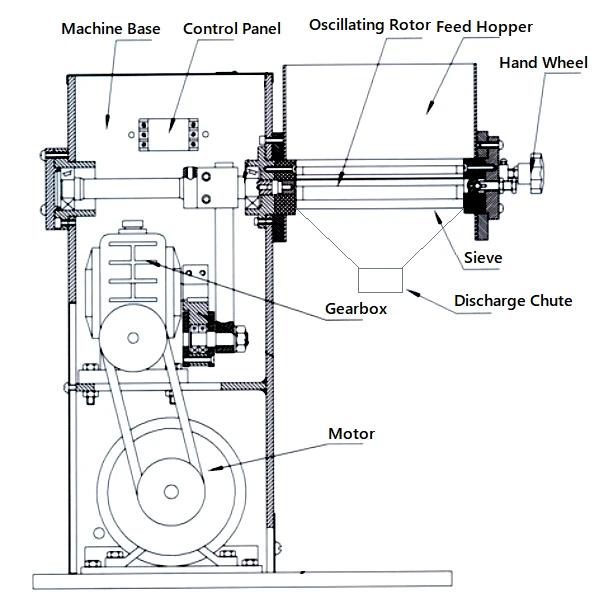
Design considerations for efficient and effective granulation
Design considerations for efficient and effective granulation include:
- Material Properties: Understanding the properties of the material to be granulated is crucial in designing an efficient granulation process. Material properties such as particle size, density, and moisture content can affect the flow, mixing, and compaction properties of the material, as well as the effectiveness of the granulation process. For example, if the material has poor flow properties, a design with an improved hopper and impeller configuration would be necessary to ensure a uniform feed to the granulator.
- Impeller Design: The impeller design is critical in determining the efficiency and effectiveness of the granulation process. The impeller’s speed, configuration, and size should be optimized to ensure proper mixing and granulation of the material. The impeller should be designed to break up the material uniformly while minimizing fines production.
- Chopper Design: The chopper design is an essential consideration for controlling the final particle size distribution. The chopper’s speed, blade configuration, and placement can be optimized to achieve the desired particle size distribution while minimizing fines production.
- Screen Design: The screen design should be optimized to ensure the efficient separation of granules from fines. The size and configuration of the screen should be optimized to achieve the desired particle size distribution.
- Air Handling: Proper air handling is necessary to remove fines and maintain a consistent flow of material through the granulator. An efficient air handling system can minimize the accumulation of fines, reducing the risk of blockages and improving the quality of the granulated material.
- Equipment Layout: The layout of the granulation equipment should be optimized to minimize material handling and maximize the efficiency of the process. Equipment should be arranged in a way that minimizes dead zones and reduces the risk of cross-contamination.
- Cleaning and Maintenance: Proper cleaning and maintenance of the granulation equipment are necessary to ensure consistent product quality and prevent downtime due to equipment failure. Equipment should be designed to facilitate easy cleaning and maintenance, with removable components and easy access for cleaning and inspection.
In summary, efficient and effective granulation requires consideration of material properties, impeller and chopper design, screen design, air handling, equipment layout, and cleaning and maintenance. By optimizing these design considerations, manufacturers can ensure consistent product quality and maximize the efficiency of the granulation process.
Maintenance and troubleshooting of granulators
Maintenance and troubleshooting of granulators are essential for ensuring the equipment’s longevity, preventing downtime due to breakdowns, and maintaining product quality. Some of the key maintenance and troubleshooting activities for granulators include:
- Regular Cleaning: Granulators should be cleaned regularly to prevent material build-up, which can cause equipment failure and affect product quality. Cleaning should include disassembling the equipment, removing any residual material, and inspecting for wear and damage.
- Lubrication: Proper lubrication of the granulator’s moving parts is necessary to ensure smooth operation and prevent premature wear. Lubrication should be done at regular intervals, following the manufacturer’s recommended guidelines.
- Inspection of Wear Parts: Wear parts such as the impeller, chopper, and screen should be inspected regularly for wear and damage. Worn or damaged parts should be replaced promptly to prevent further damage to the equipment and maintain product quality.
- Calibration: Granulators may require periodic calibration to ensure that they are operating within the desired specifications. This may involve adjusting the impeller or chopper speed or replacing the screen to achieve the desired particle size distribution.
- Troubleshooting: In the event of equipment failure or poor product quality, troubleshooting may be necessary to identify the root cause and implement corrective action. Common issues with granulators include material build-up, blockages, and wear or damage to parts.
- Training: Proper training of operators and maintenance personnel is essential for ensuring the efficient operation and maintenance of the granulation equipment. Operators should be trained in proper equipment use and maintenance procedures, while maintenance personnel should receive training in troubleshooting and repair.
Overall, regular maintenance and troubleshooting of granulators are essential for ensuring efficient operation, minimizing downtime, and maintaining product quality. By following proper maintenance procedures and addressing issues promptly, manufacturers can ensure the longevity of their granulation equipment and maximize the efficiency of their production processes.
V. Future Developments and Challenges
Emerging trends in granulation technology
Emerging trends in granulation technology are focused on improving efficiency, product quality, and sustainability. Some of the key emerging trends in granulation technology include:
- Continuous Granulation: Continuous granulation is an emerging trend that involves granulating materials in a continuous process, rather than in batch processes. Continuous granulation offers advantages such as improved efficiency, reduced equipment size, and better control over the final product’s particle size distribution.
- Process Analytical Technology (PAT): PAT is an emerging trend in granulation technology that involves using real-time monitoring and control systems to improve process efficiency and product quality. PAT involves the use of sensors and other measurement devices to monitor key process parameters, such as temperature and moisture content, and adjust the process in real-time to optimize product quality.
- High-Shear Wet Granulation: High-shear wet granulation is an emerging trend that involves using high-shear mixers to granulate materials in a wet state. High-shear wet granulation offers advantages such as improved particle size distribution, reduced fines production, and better control over the final product’s properties.
- 3D Printing: 3D printing is an emerging trend that is being used to create custom-designed granulation equipment. 3D printing enables manufacturers to create equipment with complex geometries, which can improve equipment performance and reduce material waste.
- Sustainability: Sustainability is an emerging trend in granulation technology, with a focus on reducing material waste and energy consumption. Granulation equipment is being designed to minimize material waste and improve energy efficiency, with a focus on using renewable energy sources.
- Automated Cleaning: Automated cleaning is an emerging trend in granulation technology that involves using robotic systems to clean equipment automatically. Automated cleaning systems can improve efficiency and reduce downtime by minimizing the time required for manual cleaning.
Overall, emerging trends in granulation technology are focused on improving efficiency, product quality, and sustainability. By incorporating these trends into their production processes, manufacturers can reduce costs, improve product quality, and minimize their environmental impact.
Challenges and opportunities for improvement
While granulators offer several advantages for size reduction and particle formation, there are still some challenges that manufacturers face. Here are some of the challenges and opportunities for improvement of granulators:
- Variability in Feed Materials: One of the challenges manufacturers face when using granulators is the variability in feed materials. Differences in material properties, such as particle size and density, can affect the granulation process and lead to variability in product quality. Opportunities for improvement include using advanced process control systems to monitor and adjust the process in real-time to compensate for variability in feed materials.
- Maintenance and Downtime: Another challenge for manufacturers is maintaining granulation equipment and minimizing downtime. Equipment breakdowns or maintenance requirements can interrupt production schedules and affect product quality. Opportunities for improvement include using predictive maintenance techniques to identify potential equipment failures before they occur and implementing a comprehensive maintenance program.
- Energy Efficiency: Granulators can consume a significant amount of energy, and energy costs can be a significant portion of operating costs. Opportunities for improvement include using energy-efficient equipment and technologies, such as high-efficiency motors and process control systems that optimize energy use.
- Sustainability: Granulation processes can generate a significant amount of waste, and manufacturers are increasingly focused on sustainability. Opportunities for improvement include using equipment and processes that minimize material waste, recycle materials where possible, and reduce the environmental impact of the process.
- Process Optimization: Granulation processes can be complex, and optimizing the process parameters can be challenging. Opportunities for improvement include using advanced process control systems to monitor and adjust the process in real-time to optimize the particle size distribution and improve product quality.
- Particle Size Control: Granulators can produce particles of different sizes, and achieving a specific particle size distribution can be challenging. Opportunities for improvement include using advanced process control systems to monitor and adjust the process in real-time to achieve the desired particle size distribution.
Overall, granulators offer several advantages for size reduction and particle formation, but manufacturers still face challenges related to variability in feed materials, maintenance, energy efficiency, sustainability, process optimization, and particle size control. Opportunities for improvement include using advanced process control systems, energy-efficient equipment, and sustainable processes that minimize waste and reduce the environmental impact of the process.
Potential impact on industries and society
The impact of granulators on industries and society is significant. Here are some of the potential impacts of granulators:
- Improved Product Quality: Granulators can help improve product quality by producing particles of consistent size and shape, which is important in many industries, such as pharmaceuticals and food processing. This can improve the effectiveness of the product and make it more attractive to customers.
- Increased Production Efficiency: Granulators can help increase production efficiency by reducing the time and cost of the size reduction and particle formation process. This can help manufacturers produce more products in less time, which can lead to increased profits.
- Reduced Environmental Impact: Granulators can help reduce the environmental impact of manufacturing processes by reducing waste and energy consumption. This can help companies meet sustainability goals and reduce their carbon footprint.
- Advancements in Research and Development: Granulators can enable researchers to study and develop new materials and products. This can lead to new discoveries and innovations in industries such as pharmaceuticals, food processing, and materials science.
- Improved Health and Safety: Granulators can help improve health and safety in industries such as pharmaceuticals by producing particles that are easier to handle and less likely to cause dust exposure. This can help protect workers from harmful substances and improve workplace safety.
- Economic Benefits: The use of granulators can create economic benefits for both manufacturers and consumers. By increasing production efficiency and improving product quality, manufacturers can reduce costs and increase profits, which can lead to lower prices for consumers.
Overall, granulators have the potential to significantly impact industries and society by improving product quality, increasing production efficiency, reducing environmental impact, advancing research and development, improving health and safety, and creating economic benefits.
About LKMixer
LKMixer is a professional manufacturer for fertilizer production line, grinder, mixer and granulator, shredder. These machines are widely used in food, pharmaceutical, cosmetic, health care products and chemical industries. The Food materials like Peanut, mushroom, seeds, potato, bean, tobacco, salt, cannabis, tea, Sugar, corn, Coffee, rice, pepper, grain as so on. Grinders have many types such as Pulse Dust Grinder which suitable for zero pollution environment, Turbine Mill which is suitable for coffee bean, 12-120mesh all can meet, Ultrafine Grinding Mill covers 80-200mesh, and also Winnowing Dust Grinder or other grinding machines like SF Hammer. Welcome to contact us for details. Contact us for more information. Proposal, catalog, quotation. Mobile/WhatsApp: +86 18019763531 Tel: +86 21 66037855 Email: sales@lkmixer.com
Contact Us
VI. References:
- Ahuja, P., & Vipul, B. (2014). Granulation techniques and technologies: Recent progresses. Journal of Pharmacy Research, 8(6), 791-796.
- Bokowski, M., & Loehrke, R. (2016). Dry granulation: A practical guide to the selection and design of equipment. Pharmaceutical Technology, 40(2), 44-49.
- Bose, A., & Grant, D. J. (2018). Wet granulation in pharmaceutical manufacturing. Journal of Pharmaceutical Sciences, 107(8), 2145-2156.
- Carstensen, J. T. (2002). Handbook of powder technology (Vol. 11). Elsevier.
- Ghosh, P., Bose, A., & Grant, D. J. (2017). Continuous manufacturing of oral solid dosage forms: A review. Drug Development and Industrial Pharmacy, 43(11), 1787-1802.
- Klang, V., & Windisch, C. (2016). Granulation: An overview. Powder Technology, 296, 46-55.
- Meier, R., Staubli, P., & Schaub, S. (2013). Granulation in pharmaceutical tablet production. Chemical Engineering and Processing: Process Intensification, 65, 74-80.
- Mohan, V., & Agarwal, A. (2015). Granulation: An essential step in tablet manufacturing. International Journal of Pharmaceutical Sciences Review and Research, 34(2), 177-181.
- Pukánszky, B. (2005). Handbook of fillers (2nd ed.). Elsevier.
- Rao, A. L. (2015). A review on granulation techniques for tablet manufacturing. Scholars Journal of Applied Medical Sciences, 3(1B), 322-331.


